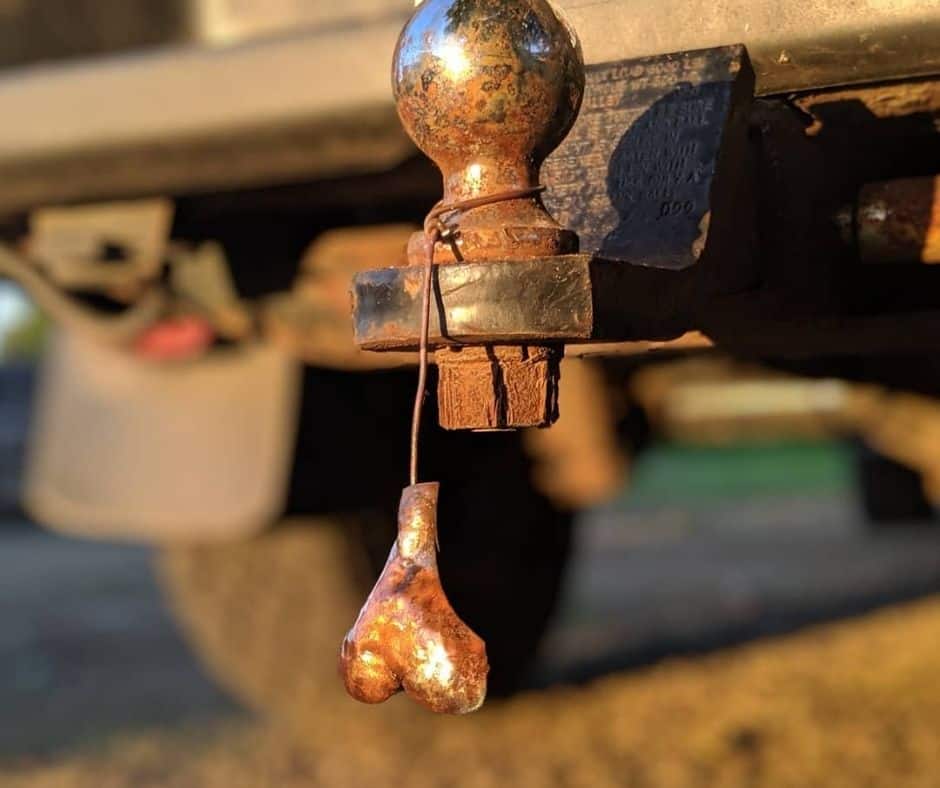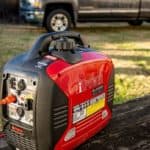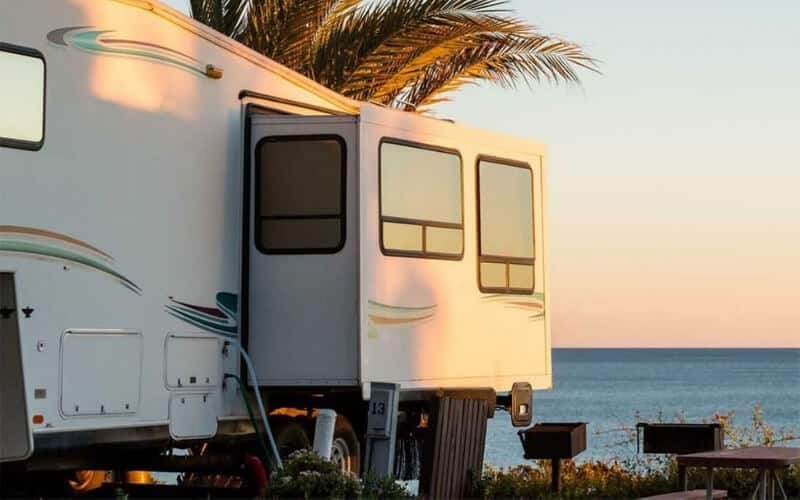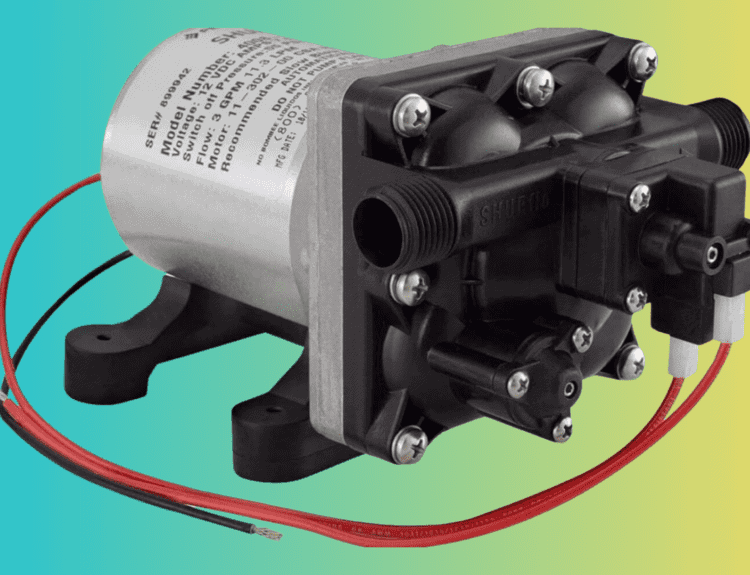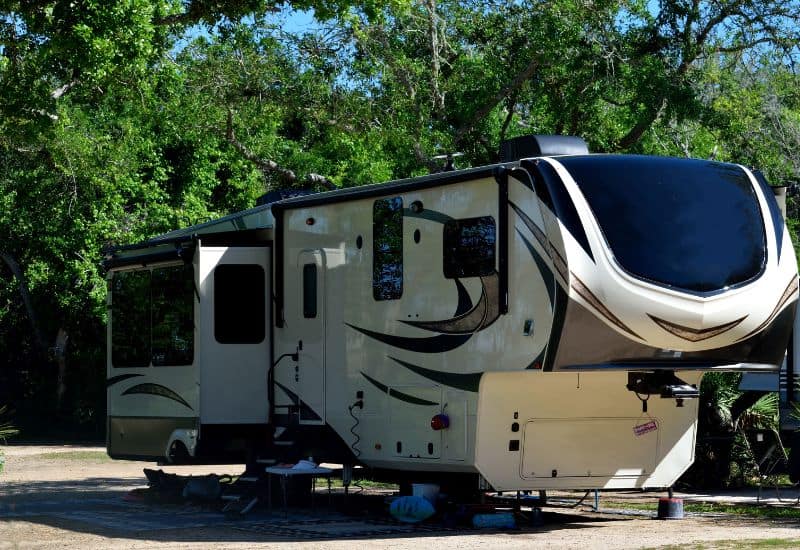If you’re looking to remove rust from truck or RV undercarriage, you’ve come to the right place. Rust is a significant issue for vehicles, especially in regions with harsh winters or coastal environments. The undercarriage of a vehicle is particularly vulnerable to rust due to constant exposure to the elements. Rust can lead to serious damage such as frame weakening, corrosion of parts, and decreased fuel efficiency.
Research conducted by the American Automobile Association (AAA) has revealed that rust is the primary cause of RV breakdowns. The study discovered that 40% of RV breakdowns can be attributed to rust.
While rust can happen anywhere on an RV or truck, it most frequently affects the structure, roof, and undercarriage. Due to its frequent exposure to the outdoors, the undercarriage is particularly prone to rust.
In this article, I will dig deeply into the details of rust, including its causes and effects. I’ll explain how to handle the situation if it occurs to you and how to avoid rust and remove it from your truck or RV’s undercarriage.
What Is Undercarriage Rust?
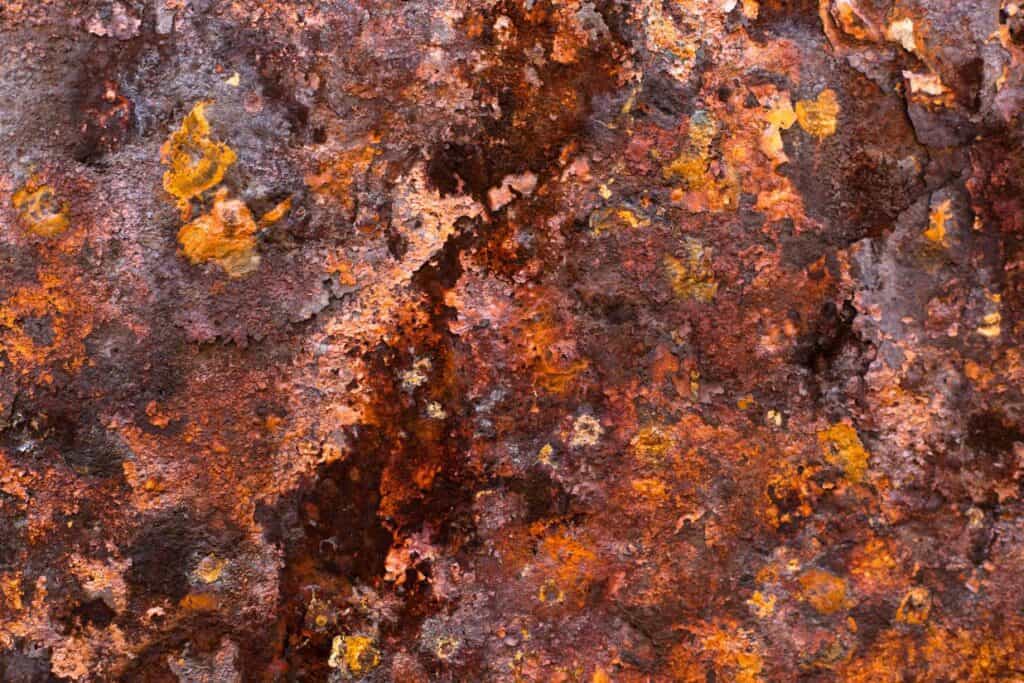
Undercarriage rust is the corrosion of metal parts on the underside of a vehicle. A combination of factors, including water, salt, and dirt exposure, causes it. Undercarriage rust can weaken a vehicle’s structural integrity and lead to costly repairs.
Factors that can contribute to undercarriage rust:
- The primary component of rust is water—rust results from metal oxidizing, which can happen when water comes into contact with metal.
- Salt speeds up the rusting process. This explains why undercarriage rust is more common in cars driven in coastal or regions with snowy winters.
- Rust can develop as dirt traps moisture and prevents it from evaporating.
- Undercarriage rust is more prone to occur in vehicles that are not properly maintained. The vehicle must also be periodically washed, its undercarriage must be waxed, and it must be rust-proofed.
- Undercarriage rust is more common in older vehicles. This is due to the possibility of the metal’s protective covering wearing off over time.
Defeating Rust With Undercarriage Rust Treatment
There are various possibilities for eliminating rust from the undercarriage. It would help if you first inspected it to determine the severity of this chemical reaction between oxygen and iron before choosing the best one for your RV or truck. If there are only a few trouble locations, light sanding may be sufficient to fix them. Below are the standard methods:
Mechanical Removal: Sanding and Wire Brushing
Simple yet highly effective techniques for physically removing rust off the undercarriage of your truck or RV include wire brushing and sanding. The corroded parts are manually rubbed using these methods to expose the clean, corrosion-free metal beneath. Here is a detailed explanation of this technique:
Step 1: Gather your tools
- Purchase a range of sandpaper grits, from coarse to fine.
- Gather wire brushes, including portable brushes and power tool attachments.
- Ensure you have gloves, safety goggles, and a dust mask.
Step 2: Prepare the area
- Park your vehicle in a well-ventilated space with proper lighting.
- Elevate the vehicle using ramps or jack stands to access the undercarriage easily.
Step 3: Begin with wire brushing
- Start with wire brushing to remove loose rust flakes and surface oxidation.
- Use handheld wire brushes for tighter spots and attach accessories to power tools for efficiency.
Step 4: Sanding for smoothness
- Choose coarse-grit sandpaper to begin, gradually moving to finer grits.
- Sand the rusted areas in a back-and-forth or circular motion, applying moderate pressure.
- The goal is to smoothen the surface and eliminate deeper rust layers.
Step 5: Watch for clean metal
- Continue sanding until you notice clean, shiny metal emerging beneath the rust.
- Be patient, especially for stubborn rust spots; consistent sanding yields the best results.
Step 6: Wipe and inspect
- Use a clean cloth to remove dust and debris.
- Inspect the sanded areas closely to ensure all rust has been removed.
Step 7: Rust Prevention
- Apply a rust converter or primer to the sanded areas to prevent new rust formation.
- Follow product instructions for proper application and drying time.
Step 8: Repeat as Needed
- The sanding and wire brushing steps may need to be repeated several times for severe rust.
- The future occurrence of serious rust development can be avoided with routine maintenance.
You can successfully use wire brushes and sandpaper to remove rust from the undercarriage of your car by carefully following these instructions. Keep in mind that getting the best results and extending the life of your truck or RV requires patience and attention to detail.
Chemical Rust Converters
Use a chemical rust remover like the Corroseal Water-Based Rust Converter if the rust is difficult to remove. Not only will it remove the rust, but it will also leave behind a primer that will guard the frame from rust in the future.
Corroseal is a water-based rust converter that dries rapidly and is simple to apply. When used, corroseal converts rust chemically into the stable substance magnetite. Magnetite is a powder that is either black or dark brown and is resistant to rust.
You can treat large and small rusty patches with Corroseal. Iron, steel, and aluminum are just a few of the metal surfaces to which it can be applied.
You must thoroughly clean the metal surface before applying Corroseal. Use a wire brush, sandpaper, or a chemical rust remover to remove loose rust and debris. Clean metal surfaces and apply Corroseal according to the manufacturer’s instructions.
Corroseal usually dries up within a few hours. When it is dry, apply primer and paint to the metal surface. This will help prevent further corrosion of the metal.
Some tips for applying Corroseal:
- Read the manufacturer’s instructions carefully before using Corroseal.
- Place Corroseal in a well-ventilated area.
- Wear goggles and gloves when using Corroseal.
- Coat the metal surface evenly with Corroseal.
- Allow Corroseal to dry completely before applying primer and paint.
The benefits of using Corroseal:
- Because of its waterproofing properties, it is suitable for use in RVs and trucks.
- Dries quickly and is easy to apply.
- Treats small and large damaged areas.
- Can be applied to a variety of metals.
- It provides a shield that helps prevent future corrosion.
Benefits of undercarriage rust treatment products:
- The biggest threat to the structural integrity of vehicles is rust, which may seriously harm the undercarriage. Undercarriage rust treatment products can prevent rust by placing a shield between the metal and the elements.
- Your vehicle’s lifespan may be shortened by rust because it makes the metal weaker and vulnerable to damage. By preventing rust, undercarriage rust treatment products can help you increase the lifespan of your car.
- A vehicle with a well-protected undercarriage will likely sell for more money when you sell it since purchasers will find it more desirable.
- Undercarriage rust treatment products create smooth surfaces under the vehicle, which helps reduce noise and vibration.
Undercarriage rust treatment products are a wise investment if you reside somewhere with harsh winters or salty roads. They can help with rust prevention and prolonging the lifespan of your vehicle.
Keeping Rust Away
Here are a few tips on how you can prevent rust:
- Regularly wash your truck or RV. Doing so will assist in preventing rust by clearing away salt, grime, and other particles.
- Frequently wax your truck or RV. The wax will help establish a weatherproof barrier. The bottom of the carriage should be treated with rust inhibitors.
- Avoid driving through salt water or mud. If necessary, wash your RV or truck immediately if you have been in muddy or salt water.
- Park your vehicle in dry and covered areas.
The Power Of Undercarriage Spray Paint
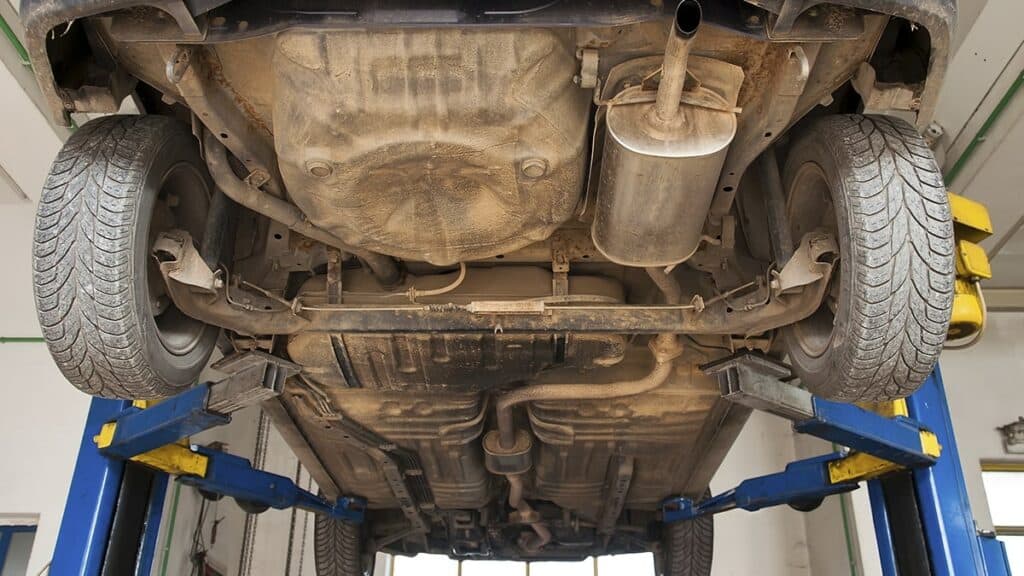
Undercarriage spray paint protects the undercarriage from rust and corrosion. Usually, it is a hard rubber paint spray painted on the car’s underside.
Undercarriage spray paint provides a shield between the environment and the metal under the cart. This barrier mainly helps to prevent oxygen and moisture, the two main oxidizing agents, from penetrating the steel. Spray painting under the car can help prevent damage from impact.
The benefits of undercarriage spray paint:
- Protects the carriage from rust and corrosion.
- Creates a barrier between the metal and the elements.
- Helps protect the carriage from shock damage.
- There are a variety of products for vehicles and the environment.
Choosing The Best Paint For the Undercarriage
There are a few things to consider when choosing the best paint for the undercarriage of a truck or RV:
- The paint you choose should be appropriate for the type of metal you will be using on the undercarriage of your truck or RV. For example, if the undercarriage of your truck or RV is made of metal, it will need to be painted with paint intended for use on the metal.
- Choose the type of finish you need, as various gloss, semi-gloss, and matte shades are available.
Here are a few popular paints specifically designed for RVs or truck undercarriages:
- Rust-Oleum Undercoating is a rust-protective spray coating available in various finishes. It is salt-resistant and can withstand high temperatures.
- Krown Rust Control is a rust-proof product that prevents rust in the undercarriage of a truck or RV. It is a shield that protects the metal from oxygen and water, the two main corrosion agents. It is a good choice for driving a truck or RV in harsh winter conditions or on salty roads.
- You can apply a chemical rust converter called Eccobond Rust Converter to the underside of an RV or truck. It converts corrosion into a strong, highly corrosion-resistant material. Trucks or recreational vehicles that have begun to rust are ideal for an Eccobond Rust Converter.
Following are some tips for choosing the best paint for an undercarriage truck or RV:
- Make sure the paint you choose is specifically for use under the carriage.
- Visit your nearest auto parts store for advice on the right paint for your needs.
- First, test the paint out of sight to ensure your truck or RV hasn’t been damaged.
- Using paint in a well-ventilated area is important, as paint fumes can be dangerous.
- The paint will protect better when applied in two coats rather than one.
- The paint should be completely dry before driving your truck or RV.
Finding Quality Undercarriage Paint And Rust Converter
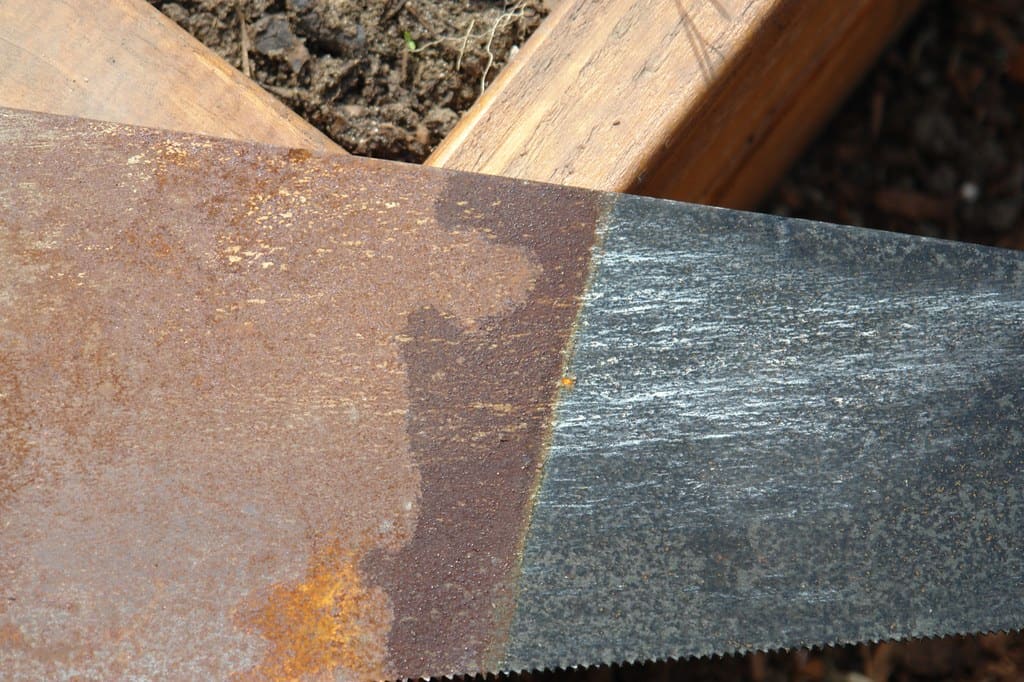
Finding the right supplies is important for protecting and maintaining the undercarriage of your car. To assist you in efficiently combating rust and corrosion, Home Depot is a respectable and well-known home improvement company. It offers a variety of high-quality undercarriage paint and rust converter solutions.
Home Depot carries respected brands of undercarriage paint known for their sturdiness and corrosion resistance. There are easily available rubberized undercoatings and epoxy-based paints that defend against the corrosive effects of moisture and road salts.
The home improvement retailer also sells rust converters like Corroseal, which chemically change rust into a stable composition to stop it from spreading. It also promotes good paint adherence.
Application Techniques: Painting Undercarriage Of Truck Or RV
It takes planning to apply undercarriage paint properly. Apply a rust converter to the undercarriage after carefully cleaning it to stop further rust development. Follow with a primer to provide the best surface for the paint to stay on.
Remember that several thin coats of paint are more efficient than one thick coat. Ensure coverage is even, and give each coat enough time to dry.
Tips For Painting The Undercarriage Of A Truck Or RV
Follow these tips when painting your truck or RV’s undercarriage:
- Park your truck or RV on a flat surface. It will make it easier to get there and prevent the vehicle from wobbling.
- You can use jacks and jack stands to lift the truck or RV through.
- Cover any sensitive parts, such as the exhaust and brake lines, with plastic wrap or a towel.
- Use a wire brush, scraper, or sandpaper to remove loose rust. Be careful not to damage the metal underneath.
- Use a rust converter, a chemical that converts rust into a protective coating.
- Use a rust-preventing primer designed explicitly for undercarriages.
- Use paint specifically designed for use on the surfaces of the carriage below. Paint according to the manufacturer’s instructions.
- Let the paint dry completely. It can take several hours, depending on the paint you’re using.
- Once the paint is dry, park the truck or RV back down.
Conclusion
The undercarriage is an important part of any vehicle, but owners often ignore it. Taking care of it can preserve the vehicle’s health and extend its life span. You must appropriately maintain your vehicle’s undercarriage to avoid expensive future repairs.
You can successfully restore and protect the undercarriage of your car by choosing the proper paint rust treatment and using the right application methods. A little work now will prevent significant hassles later. Rust and corrosion can be a huge challenge, but they can dealt with if you have the correct information and tools.
FAQs
1. What is the best type of paint to use for undercarriage spray painting?
Epoxy-based paints and rubberized undercoatings provide excellent protection against rust and road debris.
2. How to properly paint the undercarriage of a truck for long-lasting results?
Thoroughly clean, remove rust, apply a rust converter, prime, and use multiple thin coats of rust-resistant paint.
3. What are the benefits of using undercarriage rust treatment products?
Rust treatment products prevent corrosion and extend your vehicle’s lifespan.
Where can I find high-quality undercarriage paint, such as Corroseal, at Home Depot?
Home Depot offers a variety of quality undercarriage paints, including Corroseal, to protect your vehicle from rust and corrosion.

